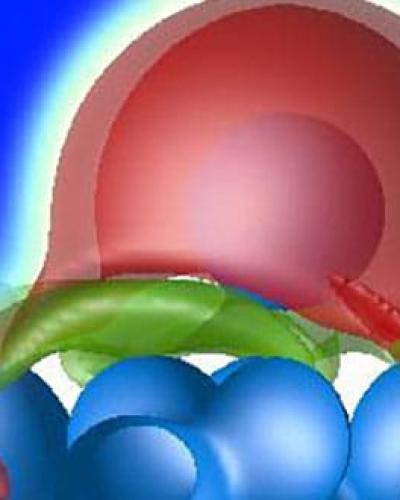The life of a theoretical condensed matter physicist is often characterized by an intriguing blend of intellectual rigor, abstract reasoning, and an insatiable thirst for understanding the nature of materials at the atomic and molecular levels. This journey, much like a meticulously brewed cup of coffee, requires precise measurements, careful timing, and the right environment to thrive. In this exploration, we delve into the multifaceted existence of these physicists, navigating through their daily routines of chalkboards and caffeine, ultimately unveiling the unique appeal that encapsulates this captivating profession.
At the heart of condensed matter physics lies the quest to scrutinize the fundamental constituents of matter—atoms, electrons, and their interactions. The theoretical condensed matter physicist engages in a cerebral ballet, eloquently translating complex physical phenomena into mathematical language. Engaging with myriad theories and models, they endeavor to elucidate the behavior of solids and liquids, phase transitions, and the emergent properties that arise from collective interactions of countless particles.
Morning in the life of a theoretical physicist usually begins with the ritual of brewing coffee. This seemingly mundane act can be viewed as a prelude to the creative chaos that lies ahead. Like the bubbling cauldron of a chemist, the aroma of freshly ground beans invigorates the mind, stimulating neural pathways primed for innovative thought. With a steaming cup in hand, thoughts begin to coalesce like particles in a lattice structure, forming the foundations upon which theoretical conjectures are built.
With the first sip of coffee, the physicist settles into their workspace—often adorned with chalkboards, whiteboards, and an array of mathematical texts. The chalkboard, a veritable canvas for the mind’s abstractions, becomes the nexus of theoretical exploration. Equations appear with purposeful strokes, symbolizing a dialogue between the physicist and the universe. Here, theories are born and refined as ideas dance across the surface like electrons hopping between energy states.
Days are punctuated by moments of intense concentration, punctuated by collaborative discussions with colleagues. Dialogues around concepts such as quantum entanglement, critical phenomena, or topological insulators fuel a vibrant intellectual ecosystem. Each conversation distills complex ideas, enabling physicists to holistically assess their understanding and challenge the status quo. Each interaction offers a kaleidoscopic view of the subject, reminiscent of the multifaceted properties of materials under varying conditions.
Yet, the life of a theoretical condensed matter physicist is not solely confined to equations and discourse. It also encompasses moments of profound solitude, akin to the serene stillness before a storm. In these quiet interludes, the physicist delves deeper into the labyrinth of their thoughts, often leading to eureka moments that rival the greatest scientific revelations. This solitary pursuit is facilitated by the ambiance of a library or a cozy study, where the whispers of the past resonate through the pages of seminal papers and groundbreaking research.
In this intellectual odyssey, the physicist often grapples with abstract concepts—such as symmetry breaking and the many-body problem—that can seem abstract to those outside the field. Yet, these notions are the bedrock for understanding critical phenomena and emergent behaviors, akin to the frothy peaks of a cappuccino rising above the surface of a cup. Each concept invites exploration, posing questions that ripple through the fabric of physical understanding.
As the sun begins to set, the hours of analysis and argumentation accumulate into new insights and burgeoning hypotheses. The theoretical physicist may find themselves engrossed in computational models, simulating the interactions of particles under various conditions. This intersection of theory and computation is much like mixing espresso with milk; it enhances depth, texture, and allows for new flavors to emerge. These models, iterative in nature, serve as a bridge between the abstract and the tangible, enabling predictions that can eventually be tested through experimental inquiries.
As the evening descends, the remote camaraderie of academic conferences looms on the horizon. Here, physicists gather to exchange ideas, present findings, and critique each other’s work. These symposiums act as crucibles for innovation; the cross-pollination of ideas often yields groundbreaking developments. With presentations ranging from cutting-edge research to speculative theoretical musings, such gatherings embody the dynamic interplay of science. The networking opportunities serve not only to advance individual careers but also to push the frontiers of knowledge itself.
The life of a theoretical condensed matter physicist is ultimately a tapestry woven from threads of creativity, collaboration, and countless hours of labor sanctified by coffee and chalk dust. The pursuit of understanding the underlying principles of matter yields not only academic prestige but also personal fulfillment. The passion for unraveling the intricacies of the material world becomes a call to action, a deliberate engagement with the enigma of existence itself.
In essence, the allure of condensed matter physics extends far beyond the confines of mathematics and theory. It is an exhilarating quest filled with the thrill of uncovering the unknown and the beauty of intellectual discovery. As physicists traverse their chalkboard-laden landscapes, the coffee-fueled journeys they embark upon—marked by ingenuity and perseverance—make a resounding impact on scientific progress. Each chalk stroke and every sip of coffee resonates with intuition, curiosity, and the relentless pursuit of knowledge, illustrating the complexities and joys inherent in the life of a theoretical condensed matter physicist.








